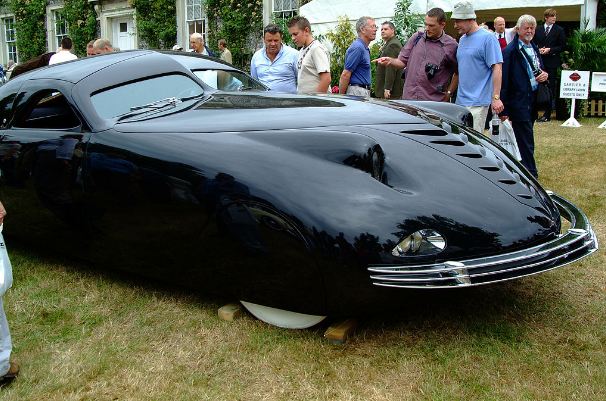The Phantom Corsair is a prototype car that was designed by the Bohman&Schwarts Company in 1938. This vehicle is considered by many car enthusiasts to be ahead of its time, as its unique appearance is now commonly seen in most sports cars today. Because it has a futuristic look, there were not a lot of people who were interested in buying the Phantom Corsair, and because of that, the car never went into production. Who came up with the interesting concept of this sleek vehicle? Let us find out as we dive right into the fascinating history of the Phantom Corsair.
Origins of the Corsair
The Phantom Corsair was designed by Rust Heinz and Maurice Schwartz. Heinz was the son of Elizabeth Granger Heinz and Howard CovodeHeins, although he is more famous for being the grandson of Henry John Heinz, who was the founder of the H.J. Heinz Company and the owner Heinz Ketchup brand. Although he was born from a wealthy family, Heinz did not want to inherit the H.J. Heinz Company and wanted to make a name for himself.
Heinz then studied Naval Architecture at Yale University and the Westland Academy of Yacht Design. While he was a student, he began designing speedboats, and it is through designing that he discovered his passion for building cars. Heinz pursued his newfound passion and left school in 1936 in order to work as an automobile designer in California. At the age of 21, Heinz designed the delivery car for the H.J. Heinz Company called the Comet. This vehicle was built for Heinz by the Square Deal Body Company. Two years after creating the Comet, Heinz then designed the Phantom Corsair with the help of Maurice Schwartz, who was one of the owners of the Bohman& Schwartz Company, which was a coach building business that was located in Pasadena, California. The said company was founded by the former employees of the Walter M. Murphy Company, a manufacturer of custom-made bodies for car chassis that collapsed in 1932.
In terms of the Phantom Corsair that Schwartz and Heinz designed, its body consists of a combination of steel and aluminum, and its height is measured to be only 57 inches, which is considered short during that time. For its other features, the Phantom Corsair has fenders that are completely flush, and it has fully-skirted wheels that are rarely seen in vehicles in the 1930s. A feature that it weirdly lacks is the door handle for each door, although Heinz conceptualized the process of opening the door electrically by utilizing push-buttons that are found near the door and in the instrument panel inside the vehicle. Speaking of its instrument panel, the car also has an altimeter that measures the altitude of the car, as well as a compass for the driver to know which direction he or she is going.
Heinz chose the Cord 810 as the engine for the Phantom Corsair. The engine is produced by the Cord Automobile division of the Auburn Automobile Company, and its year of production is between 1936 and 1937. The 810 is said to be the most advanced engine that is available in the market during the 1930s, and to continue the futuristic theme of the vehicle, Heinz decided to use an advanced engine. In addition, the Phantom Corsair also has a front-wheel-drive (FWD) feature, which was a relatively new concept in 1938.
Even though it is short, its body is long, as its length measure at 237 inches. Furthermore, it is also wide enough to accommodate one drive and three passengers since it measures 76.5 inches in width. While the front seats look normal, the back seats are accompanied by an on-board beverage cabinet. While the cabinet is a nifty feature, it limited the number of people that sit at the back to only two.
Despite weighing approximately 2,100 kilograms, the Phantom Corsair could be fast enough to achieve speeds of up to 115 miles per hour. Its speed is mainly attributed to its engine and its aerodynamic shape that generates less wind resistance while moving.
Rust Heinz and the Bohman& Schwartz Company agreed to sell the Phantom Corsair for $12,500 in limited quantities, even though the cost to build the prototype that they had was $24,000. Unfortunately, when Heinz was killed in a car accident on July 24, 1939, the plans to produce the Phantom Corsair was scrapped. In the said car accident, there were six people that were injured, but Heinz was the only one who passed away. Because the production was canceled, there was only one model that was made, and that was the prototype that was tested and inspected by Heinz. The prototype Phantom Corsair, which is considered one of the rarest cars in the world, is currently in the hands of the National Automobile Museum in Reno, Nevada.

